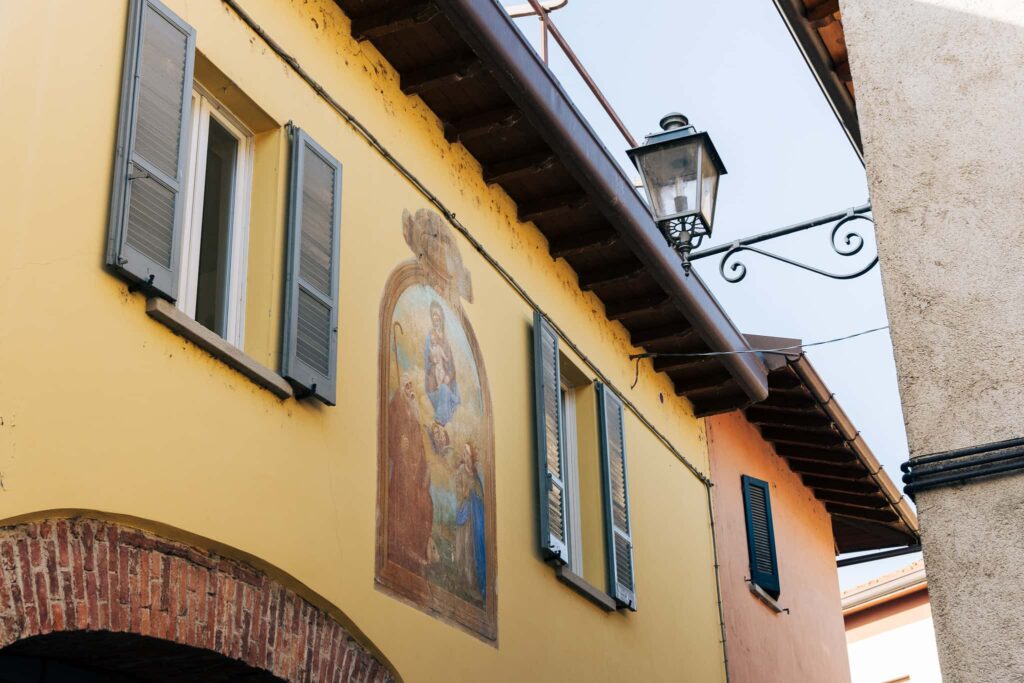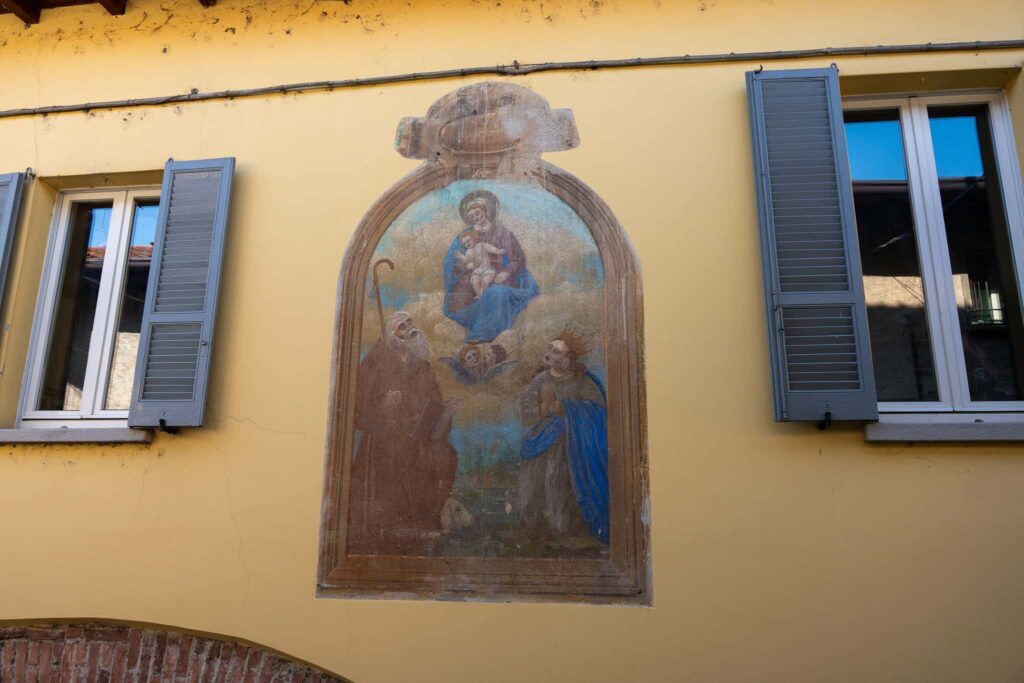Adorning the façade of the so-called Casa Riva or “casa di lacé” (milkmen’s house, since it was home to a family that collected and sold milk), is a fresco portraying the Virgin Mary alongside St. Anthony and presumably St. Catherine, given the crown she is wearing on her head.
St. Anthony of the Pig was the guardian of animals, which explains his depiction on this particular house. In the stables, it was customary to hang a picture of St. Anthony. Whenever cows fell ill or were due to give birth, the farmer would light a candle he had taken from the church on the saint’s dedicated day (17 January) and, with earnest devotion, would pray in front of the cow, using the blessed candle to trace the sign of the cross, as if to transfer—through the wax of the candle blessed by the priest—the saint’s protection onto the beast. Alternatively, he would give the salt blessed on that occasion to the beasts.
St. Anthony Abbot, not to be confused with St. Anthony of Padua, who lived ten centuries later, was and remains a revered figure in our region, particularly within the realms of agriculture and animal husbandry. He is typically depicted as an old man with a long, grey beard, leaning on a crutch-shaped stick and often accompanied by a piglet at his feet. This monastic patriarch lived in Egypt between 250 and 356. The Saint’s relics, transferred to France in the 11th century, facilitated the widespread popularity and veneration of this Egyptian anchorite throughout the western world, including the Brianza region.
In sacred images, the holy abbot is often depicted alongside a pig, a symbolism that later evolved to include other domestic animals and sometimes the imagery of a flame or fire. For ancient Jews, the pig already represented the tempting devil. In an episode from Luke’s gospel, Jesus casts out a group of demons called Legion from a man, which are then incarnated in a herd of nearby pigs. Artworks from the Middle Ages onwards reinforced the connection between the Egyptian hermit monk and the animal, leading to an interpretation tailored to the needs of farmers and breeders: the pig, stripped of its symbolic connotations, was regarded as the beneficiary of St. Anthony’s protection, as farmers entrusted their most precious assets to his care. The fire, in proximity to the saint, can be traced back to the belief that Anthony was a thaumaturge of the “sacred fire” (herpes zoster), called “St. Anthony’s fire” in Italian, a condition particularly affecting farmers who ate rye bread.


